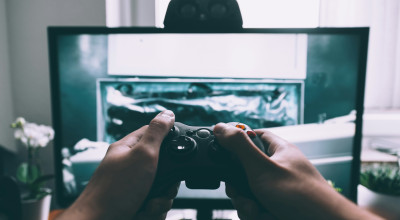Transcranial Magnetic Stimulation [TMS] for Addiction and Mental Health: A Promising Treatment Gets Even Better
June 9th, 2025
By P. Casey Arrillaga, LCSW, LCDC
Transcranial Magnetic Stimulation, or TMS, is a cutting-edge treatment that uses magnetic pulses to stimulate specific areas of the brain. It has been recognized as a powerful tool to help people with mental health issues such as anxiety, depression, and addiction, all without any serious or long-term side effects. There have been exciting new developments using TMS in increasingly personalized ways to get even better results for people seeking real relief. This post explores what we know so far, improved techniques that are increasing the effectiveness of TMS, and how we are using this knowledge to help people directly.
How TMS Helps With Addiction and Other Mental Health Conditions
According to the National Institutes of Health, the use of electrical impulses on the human brain got attention as far back as the late 19th century, but its evolution into transcranial magnetic stimulation [TMS] traces to landmark research and discoveries in 1985. TMS a non-invasive procedure, meaning no surgery or medication is involved. This is particularly helpful for people who have a history of substance abuse. TMS is gaining popularity because it can help people struggling with many mental health conditions. For instance, research has shown that people with treatment-resistant depression often experience real relief with TMS, giving hope to those who have tried everything else without success.
TMS isn’t just for depression—it’s also being used to help with anxiety, post-traumatic stress disorder (PTSD), and obsessive-compulsive disorder (OCD). Studies have shown that stimulating certain parts of the brain can reduce the constant worry and distress that come with these conditions. The FDA has even approved TMS for treating OCD in some cases.
Another exciting use of TMS is in treating addiction. Whether it’s alcohol, drugs, or nicotine, substance use disorders can be extremely hard to overcome. TMS offers a new approach by targeting the brain areas responsible for cravings, reward, and self-control. For example, in one study, people with cocaine addiction who received TMS had fewer cravings and used less cocaine than those who didn’t get the treatment. This suggests that TMS can be a powerful tool in the journey to recovery. In another study, smokers who received deep TMS to key areas of the brain were more likely to quit and stay smoke-free compared to those who didn’t receive active treatment. This supports the idea that TMS works by calming the brain circuits that drive addictive behaviors, making it easier to break the cycle.
How We Are Making TMS Even Better
One of the most exciting improvements in recent years is the increasing personalization of TMS. Research shows that there is great potential in tailoring TMS to the individual, so that we move away from a one-size-fits-all model. One such personalized approach is used at the Brain Frequency Center located on site at Windmill Wellness Ranch. Brain Frequency uses iTMS, which stands for “Individualized TMS.” This treatment protocol starts with taking a qEEG, which is a measurement of electrical activity in the brain. This allows the medical staff to see how well different brain regions are doing both individually and in conjunction with each other. The iTMS can then be targeted in both location and strength to the issues each individual is experiencing. In addition, a new qEEG is taken each time a client has completed 10 treatments. As these results are run through sophisticated software analysis, clients and providers can see both progress and areas for improvement.
Internal and external research on the Brain Frequency approach shows that this type of individualized treatment leads to improvement in symptoms of anxiety, depression, ADHD, sleep, and desire to use alcohol or other drugs. In fact, independent observation and analysis from Trac9 showed that the Brain Frequnecy protocol helped improve clients’ motivation to recover from addiction.
Interestingly, TMS is one of many ideas that falls under the umbrella of “biohacking,” which is a movement to find effective alternative and cutting-edge approaches to improving human health. The more TMS is individualized, the more it falls in line with this idea, since biohacking often involves seeing what novel approaches can help a given person be the best version of themselves. Watch this blog space, as we will likely do a comprehensive overview of biohacking sometime soon.
How Do We Use This Knowledge to Help People?
At Windmill, we are passionate about finding innovative ways to help each client. This is one of the reasons we host the Brain Frequency Center to do iTMS on our campus. While it is a separate service and is thus optional, every client at Windmill gets a qEEG near the beginning of their stay. Whether or not they decide to utilize Brain Frequency as part of their treatment, this first qEEG can help guide staff in personalizing treatment for that client.
In addition, we have a weekly staff meeting with members of the medical, clinical, recovery coaching, and Brain Frequency teams to see how we can best collaborate in each client’s care. Having this depth of information and insight helps guide treatment decisions such as therapeutic approach, medication, and when each client seems ready to move into the next phase of their recovery journey.
The Bottom Line
As more research continues, TMS is quickly becoming a valuable part of mental health and addiction care. It can be used on its own or alongside other treatments like therapy and medication. With its increasing availability and encouraging results, TMS offers new hope for people and families searching for effective, lasting relief from mental health and addiction challenges.
About The Author
P. Casey Arrillaga is the Team Leader for Education at Windmill Wellness Ranch, and he is the author of books including “Realistic Hope: The Family Survival Guide for Facing Alcoholism and Other Addictions”.


